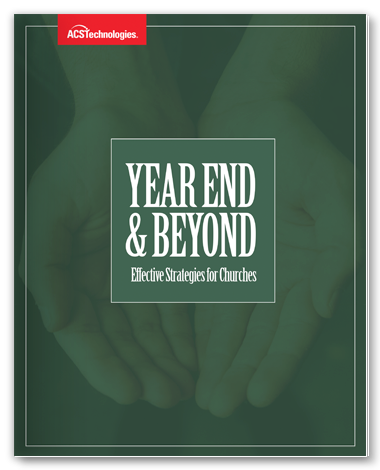Year-End and Beyond Series 3
The last quarter of the year is when most nonprofits and ministry organizations see more than half of their annual contribution revenue come in. Though not true for all, many donors consider making significant contributions in the last weeks of the calendar year. These decisions can be driven by both their interests and the realities of tax benefits.
In this blog series, we’ve been outlining four steps to make the most of year-end giving – or beyond. So far, we’ve unpacked reviewing your goals, setting an action plan, and planning your calendar. The third step is gathering stories for great appeals.
Share the stories
I’d encourage you to gather these stories – how your church and its ministries impact real people – in a systematic way, year-round. Chances are, the frontline staff and volunteers are the ones you need to tap to share those stories of lives changed. Make sure to ask for these stories regularly from your frontline or program staff – anyone in your church – who can help you illustrate the difference your congregation is making.
The best stories compel an immediate need to take action. The descriptive language paints a picture of what is happening and how your church is advancing the Kingdom, meeting people’s needs, and solving problems. Ideally, it’s the story of a person and his or her transformation.
We’ve been using an example in this series of a 12 days of giving campaign to close a $125,000 budget gap. This is a church-wide project and effort, so this campaign’s stories could (and I’d argue should) come from various ministries and places in the congregation. As you think about your local or global missions, children or youth ministry, your outreach programs, or your partnerships,
Consider these questions:
- What is the problem our church/this ministry is solving?
- What is the situation like before the problem is solved? After the problem is solved (and the church has played a role)?
- What are the real costs of these solutions/programs?
- How do we measure the impact?
- What is the true impact of an individual donor? (ie, how many donors giving at $50 a week does it take to fund your hunger mission program?)
These questions help you tie your church’s impact story to the direct need for donor gifts. Your appeals should share stories of your ministries’ impact, the stories of the people whose lives have been transformed. And those appeals should be clear about the role donors have and the impact they can make through their giving.
In the case of our example project, we also need to be clear about what a $125,000 shortfall from projected pledges could mean for the life of the church. We can illustrate that with professionalism and without being alarmist.
I’ve seen organizations launch “emergency” urgent giving campaigns. While perhaps successful in meeting a need, caused more damage in the long-run. Discern launching an “emergency” fundraising appeal very carefully. They can, and often do, cause both concern and fatigue among donors- especially if you do them with any frequency. Your donors may feel as if the “emergency” really was ill-advised planning and poor management. These urgent projects are merited occasionally, but not nearly as often as they’re launched on donors.
Conclusion
Donors have an emotional tie to your church and your mission – it’s important not to ever exploit that for the purposes of meeting a specific budget need. The trust and credibility you have with your members and donors is far more valuable than any fundraising “win.”
In our next blog, we’ll outline the final step of year-end planning, which is thanking donors often.
Four Steps to an Effective Year-End
Most ministry organizations see a big upswing in donations in the last quarter of the year. Many donors consider making significant contributions in the last weeks of the calendar year. These decisions can be driven by their passions and interests and the realities of tax benefits.
In this article, you’ll learn four steps to help your church make the most of year-end giving – and beyond.
Tim has over 30 years of experience in Church, Non-Profit Administration, Management, and Fund Development. Serving as an Executive Pastor and Chief Development Officer in growing Churches and Non-Profit Organizations. He has provided a wide range of expertise and resources. Tim serves as the Founder and CEO of Non-Profit DNA. A boutique firm committed to helping nonprofits and churches. By building their capacity through fundraising, leadership, team building, staff recruiting, and coaching.





